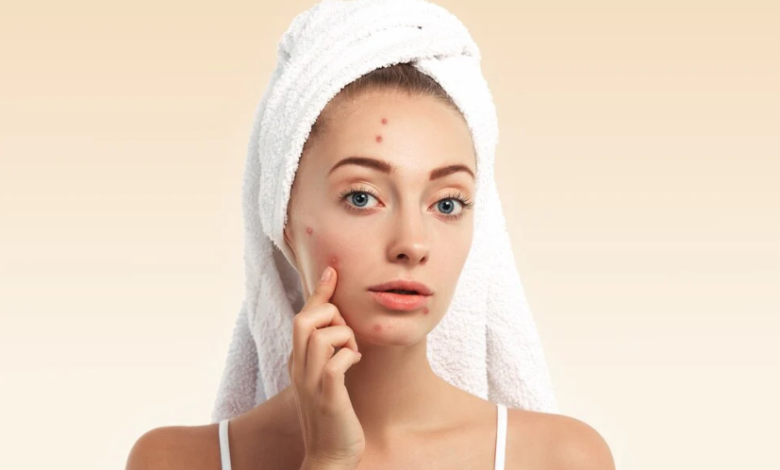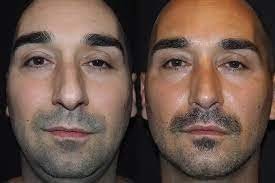How Long to Leave Pimple Patch On: The Right Way to Use It for Best Results

Knowing how long to leave pimple patch on is the secret to making these tiny acne-fighting stickers work their magic. Leave the patch on long enough to work, but not so long that it loses effectiveness. Knowing how long to leave a patch on and using it correctly helps your skin heal faster, stay less red, and avoid extra irritation. In this article, we’ll guide you through the correct way to use pimple patches for clear, healthy-looking skin.
What Is a Pimple Patch and How Does It Work?
A pimple patch is a small, sticky spot treatment made with hydrocolloid, a material that helps wounds heal by absorbing fluid and protecting the skin. These patches are specially designed to treat pimples gently and effectively without squeezing or popping.
Here’s how they work:
- They absorb pus, oil, and impurities.
The hydrocolloid in the patch draws out fluid and gunk from your pimple, helping to flatten it and reduce redness.
- They protect your skin.
The patch works like a shield, keeping dirt, bacteria, and your fingers away from your pimple. This prevents irritation and reduces the risk of scarring.
- They create a healing environment.
The patch keeps your skin slightly moist and covered, which helps the pimple heal faster and with less redness or irritation.
- They’re discreet and easy to use.
Most pimple patches are thin, clear, and lightweight, so you can wear them overnight or during the day without anyone noticing.
Pimple patches help your skin heal faster by absorbing impurities, protecting the blemish, and reducing inflammation for a quicker recovery.
Signs It’s Time to Remove or Replace the Patch
Knowing when to remove or replace your pimple patch is key to keeping it effective and preventing skin irritation. Look out for these signs:
- The patch turns white or cloudy.
A white or cloudy patch means it has absorbed impurities and done its job.
- The edges start lifting or peeling.
When the patch starts to come loose, it can’t protect your pimple or absorb fluids effectively. Replace it with a fresh patch if needed.
- The recommended time has passed.
Most patches work best for 8–12 hours. After this, they stop being effective, and leaving them on too long can irritate your skin.
- The blemish still looks active.
If the pimple hasn’t flattened or is still inflamed, gently clean the area and apply a new patch to continue treatment.
- You notice irritation or itching.
Take the patch off immediately if it causes discomfort, redness, or itching, as your skin may be sensitive to it.
Peel the patch off slowly from one edge and wash the area gently before applying a new patch. This helps your skin stay healthy while continuing treatment.
See also: Complete Guide to Latex Mattresses and Single Bed Mattresses: Comfort, Support, and Health
What Happens If You Leave a Pimple Patch on Too Long?
Life gets busy, but leaving a pimple patch on too long can make it less effective and may irritate your skin. Here’s what happens:
- Reduced Effectiveness
Pimple patches can only absorb so much. After about 8–12 hours, most patches are fully saturated and won’t pull out any more pus, oil, or impurities. Once a patch has absorbed impurities, it won’t speed up healing. Replace it with a fresh one if your pimple still needs care.
- Skin Irritation
If you leave a patch on for too long, the skin underneath stays too wet. This can weaken your skin, causing redness, irritation, or even new pimples around the patch.
- Risk of Bacteria Build-Up
Once a patch has absorbed impurities, it can become a breeding ground for bacteria if left on too long. This could worsen acne rather than help it.
Pimple patches are most effective when used within the recommended time. Over-wearing can reduce results and irritate your skin.
Step-by-Step: How to Use a Pimple Patch Correctly
Using a pimple patch is easy, but following the right steps ensures it works safely and effectively:
- Wash your hands
Clean hands prevent bacteria from getting onto your blemish.
- Cleanse your face
Use a gentle cleanser to remove dirt, oil, and makeup. Pimple patches stick best when your skin is clean and completely dry.
- Optional: Apply treatment
- Medicated patches: Skip applying extra products underneath.
- Plain hydrocolloid patches: You can use a thin layer of non-oily spot treatment, but ensure the skin is completely dry first.
- Peel and apply the patch
Carefully remove the patch from its backing without touching the sticky side. Center it over the pimple and press the edges down so it seals completely.
- Leave it on for 8–12 hours
Overnight use is ideal. The patch will absorb pus, oil, and fluid, often turning white or cloudy when it’s full.
- Remove gently
Lift an edge and peel the patch off slowly. If any residue remains, rinse with warm water or use a gentle cleanser.
- Repeat if needed
If the pimple is still active, clean the area and apply a fresh patch to continue treatment.
Do’s for Using Pimple Patches
- Use on whiteheads or small, closed pimples.
- Keep the skin clean and dry before applying.
- Wear the patch overnight for the best results.
Don’ts for Using Pimple Patches
- Do not apply to open or bleeding skin.
- Do not pick or squeeze your pimple while the patch is on.
- Do not leave a patch on for more than 12 hours.
- Do not reuse patches; each one is for single use only.
Following these steps helps your pimple heal faster, reduces inflammation, and lowers the risk of scarring.
Common Mistakes to Avoid
To get the best results from your pimple patch, avoid these common errors:
- Applying the patch on damp or oily skin
A pimple patch won’t stick well to damp or oily skin, which makes it less effective. Always clean and dry the area before applying the patch.
- Leaving the patch on too short or too long
- Too short: It won’t have time to absorb pus and oil.
- Too long: It can irritate your skin and cause loss of adhesion. Follow the recommended 8–12 hours.
- Layering over skincare products
Avoid putting lotions, oils, or serums under your pimple patch. These can stop it from sticking properly and reduce its effectiveness. Always apply the patch to clean, product-free skin.
- Reusing patches
Pimple patches are for one-time use only. Reusing a patch can spread bacteria and make it less effective, so always use a fresh patch for each application.
Apply patches on clean, dry skin, leave them for the recommended time, and replace with a fresh patch if needed. This helps pimples heal faster and reduces the risk of scarring.




